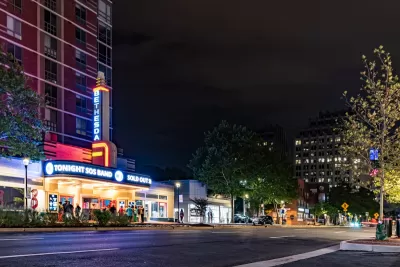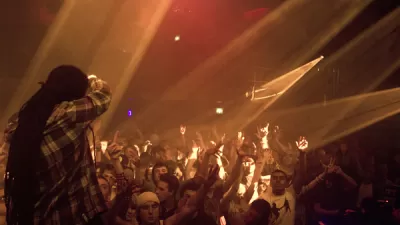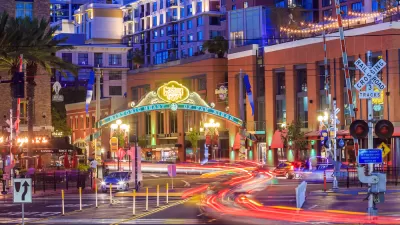The county hasn’t acted on the recommendations of its own Nighttime Economy Task Force, which suggested ways to improve the business climate for restaurants and nightclubs to draw younger residents to the region.

In a piece for Greater Greater Washington, Weston Henry describes how Montgomery County’s business regulations are stifling the development of nightlife in the county.
According to Henry, the Nighttime Economy Task Force, formed in 2013, published a series of recommendations to revitalize the county and bring more residents and businesses to the area. “And yet, here we are eleven years later, with no dance clubs, few late-night spots, and little evidence to suggest that the perception of the county as a social desert for singles has changed.”
Henry blames this on the Board of License Commissioners, which “is solely responsible for creating the county’s alcohol rules and regulations, and have created a series of regulations seemingly designed with the sole intention of preventing any venue catering to young, single, or recently transplanted people to open in the county.” Henry notes that restrictions on restaurants and bars such as requiring that 40 percent of income be earned through food sales, prohibiting dancing in venues without a special license, and requiring a full menu of food are preventing businesses from operating successfully. While the task force recommended a new social venue license, it was never created.
While some local officials say the younger work force will move back to the county after they have kids, this belief, Henry writes, “is a terrible economic strategy. It contributes to our massive labor shortage, which forces employers to eliminate positions, as the county itself did last year, or move to where they can find people to fill these positions.”
FULL STORY: Where’s the nightlife in Montgomery County?

Trump Administration Could Effectively End Housing Voucher Program
Federal officials are eyeing major cuts to the Section 8 program that helps millions of low-income households pay rent.

Planetizen Federal Action Tracker
A weekly monitor of how Trump’s orders and actions are impacting planners and planning in America.

Ken Jennings Launches Transit Web Series
The Jeopardy champ wants you to ride public transit.

California Invests Additional $5M in Electric School Buses
The state wants to electrify all of its school bus fleets by 2035.

Austin Launches $2M Homelessness Prevention Fund
A new grant program from the city’s Homeless Strategy Office will fund rental assistance and supportive services.

Alabama School Forestry Initiative Brings Trees to Schoolyards
Trees can improve physical and mental health for students and commnity members.
Urban Design for Planners 1: Software Tools
This six-course series explores essential urban design concepts using open source software and equips planners with the tools they need to participate fully in the urban design process.
Planning for Universal Design
Learn the tools for implementing Universal Design in planning regulations.
Ada County Highway District
Clanton & Associates, Inc.
Jessamine County Fiscal Court
Institute for Housing and Urban Development Studies (IHS)
City of Grandview
Harvard GSD Executive Education
Toledo-Lucas County Plan Commissions
Salt Lake City
NYU Wagner Graduate School of Public Service




























